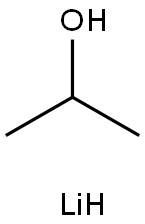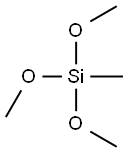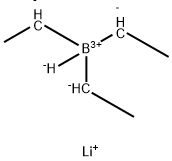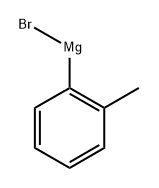LITHIUM TETRACHLOROCUPRATE
- CAS NO.:15489-27-7
- Empirical Formula: Cl4CuLi-
- Molecular Weight: 212.29
- MDL number: MFCD00011081
- EINECS: 203-726-8
- SAFETY DATA SHEET (SDS)
- Update Date: 2025-01-27 09:38:02

What is LITHIUM TETRACHLOROCUPRATE?
Chemical properties
clear orange to brown-red solution
The Uses of LITHIUM TETRACHLOROCUPRATE
Lithium tetrachlorocuprate acts as catalyst used to couple alkyl halides with alkyl Grignard reagents, Used to halogenate pyrimidine nucleosides. Organic soluble copper catalyst used in catalytic quantities to improve the efficiency of halide and allylic acetate displacements with Grignard reagent, it is used in stoichiometric amounts to open epoxides and aziridines.
Properties of LITHIUM TETRACHLOROCUPRATE
| Boiling point: | 66°C |
| Density | 0.91 g/mL at 25 °C |
| Flash point: | 1 °F |
| storage temp. | Flammables area |
| solubility | Difficult to mix. |
| form | Liquid |
| Specific Gravity | 0.91 |
| color | Dark orange |
| Sensitive | Moisture Sensitive |
| Exposure limits | ACGIH: TWA 50 ppm; STEL 100 ppm (Skin) OSHA: TWA 200 ppm(590 mg/m3) NIOSH: IDLH 2000 ppm; TWA 200 ppm(590 mg/m3); STEL 250 ppm(735 mg/m3) |
Safety information for LITHIUM TETRACHLOROCUPRATE
| Signal word | Danger |
| Pictogram(s) |
 Flame Flammables GHS02  Exclamation Mark Irritant GHS07  Health Hazard GHS08 |
| GHS Hazard Statements |
H225:Flammable liquids H302:Acute toxicity,oral H315:Skin corrosion/irritation H319:Serious eye damage/eye irritation H333:Acute toxicity,inhalation H335:Specific target organ toxicity, single exposure;Respiratory tract irritation H351:Carcinogenicity H371:Specific target organ toxicity, single exposure H372:Specific target organ toxicity, repeated exposure |
| Precautionary Statement Codes |
P201:Obtain special instructions before use. P210:Keep away from heat/sparks/open flames/hot surfaces. — No smoking. P233:Keep container tightly closed. P240:Ground/bond container and receiving equipment. P260:Do not breathe dust/fume/gas/mist/vapours/spray. P264:Wash hands thoroughly after handling. P264:Wash skin thouroughly after handling. P270:Do not eat, drink or smoke when using this product. P271:Use only outdoors or in a well-ventilated area. P280:Wear protective gloves/protective clothing/eye protection/face protection. P303+P361+P353:IF ON SKIN (or hair): Remove/Take off Immediately all contaminated clothing. Rinse SKIN with water/shower. P305+P351+P338:IF IN EYES: Rinse cautiously with water for several minutes. Remove contact lenses, if present and easy to do. Continuerinsing. P370+P378:In case of fire: Use … for extinction. P405:Store locked up. P403+P233:Store in a well-ventilated place. Keep container tightly closed. P403+P235:Store in a well-ventilated place. Keep cool. P501:Dispose of contents/container to..… |
Computed Descriptors for LITHIUM TETRACHLOROCUPRATE
LITHIUM TETRACHLOROCUPRATE manufacturer
HYCHEM LABORATORIES
1Y
Phone:+91-9391007257
Whatsapp: +91-9391007257
product: Di-Lithium Tetrachlorocuprate(II) Solution (0.1M in THF) 15489-27-7
New Products
1-Boc-4-cyanopiperidine 1,3-Cyclopentanedione TETRABUTYLAMMONIUM CYANIDE 3-Pyridineacrylic acid TETRAHYDRO-2H-PYRAN-3-OL tert-Butyl carbazate Aluminum potassium sulfate dodecahydrate 4-Fluorothiophenol, 97% 2-Hydroxy-4-methylpyrimidine hydrochl N-Boc-L-tyrosine, 95% Ethyl acetoacetate, 98% 2-Amino-3-hydroxypyridine, 98% Carvedilol Abiretorone Deferasirox Omeprazole Sertraline HCl Riveroxaban 4-Amino Acetophenone Amlodipine Base Para Benzoquinone (PBQ) 2,3,5-Triiodobenzoic Acid 2-Chloro Acetophenone Diiodo PentoxideRelated products of tetrahydrofuran








You may like
-
 Lithium tetrachlorocuprate CAS 15489-27-7View Details
Lithium tetrachlorocuprate CAS 15489-27-7View Details
15489-27-7 -
 Lithium tetrachlorocuprate CAS 15489-27-7View Details
Lithium tetrachlorocuprate CAS 15489-27-7View Details
15489-27-7 -
 Di-Lithium Tetrachlorocuprate(II) Solution (0.1M in THF) 15489-27-7View Details
Di-Lithium Tetrachlorocuprate(II) Solution (0.1M in THF) 15489-27-7View Details
15489-27-7 -
 LITHIUM TETRACHLOROCUPRATE (0.1 M in THF) 15489-27-7View Details
LITHIUM TETRACHLOROCUPRATE (0.1 M in THF) 15489-27-7View Details
15489-27-7 -
 Dilithium Tetrachlorocopper(II) (ca. 2.5% in Tetrahydrofuran, ca. 0.1mol/L) CAS 15489-27-7View Details
Dilithium Tetrachlorocopper(II) (ca. 2.5% in Tetrahydrofuran, ca. 0.1mol/L) CAS 15489-27-7View Details
15489-27-7 -
 Dilithium tetra chloro cuparate 0.1M in THF CAS 15489-27-7View Details
Dilithium tetra chloro cuparate 0.1M in THF CAS 15489-27-7View Details
15489-27-7 -
 Dilithium tetrachlorocuprate(II) solution CAS 15489-27-7View Details
Dilithium tetrachlorocuprate(II) solution CAS 15489-27-7View Details
15489-27-7 -
 202-879-8 2-Venylpyridine 98%View Details
202-879-8 2-Venylpyridine 98%View Details
202-879-8
Statement: All products displayed on this website are only used for non medical purposes such as industrial applications or scientific research, and cannot be used for clinical diagnosis or treatment of humans or animals. They are not medicinal or edible.
